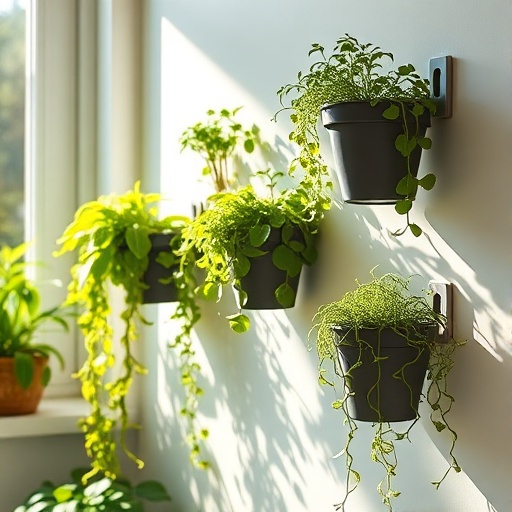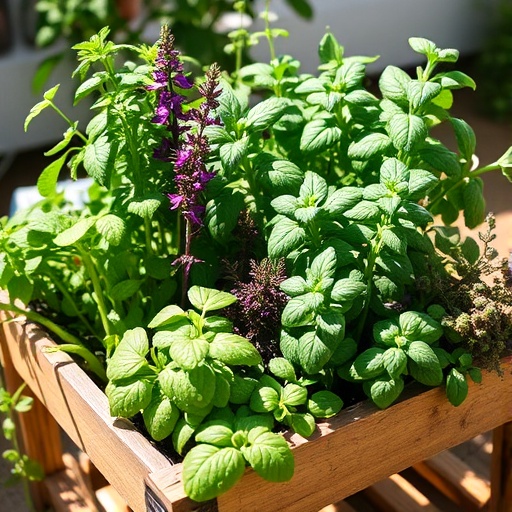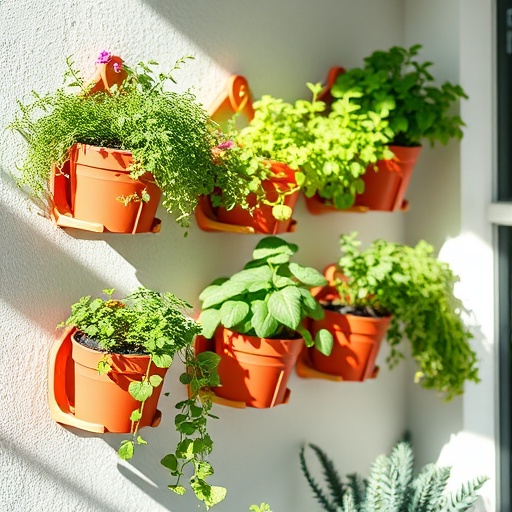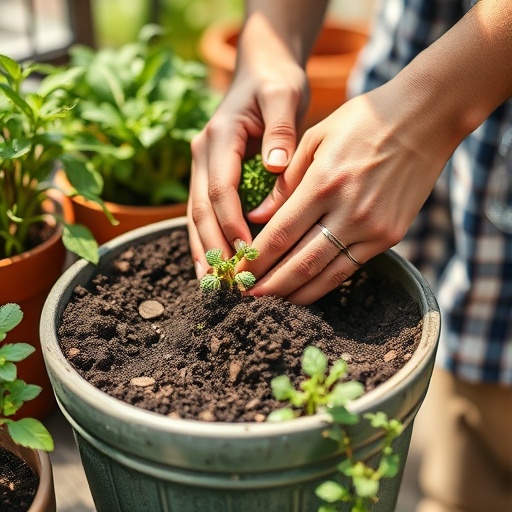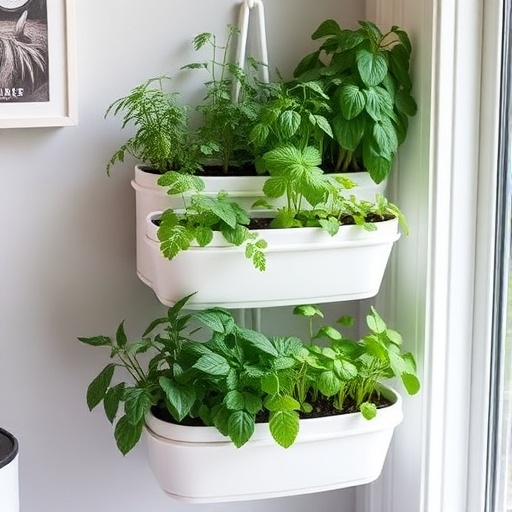Introduction
Ever found yourself yearning for a lush green haven, a burst of fresh herbs, or even a few homegrown vegetables, only to be stopped by the dreaded thought of limited space? Does the concrete jungle or a cozy apartment balcony seem like an insurmountable barrier to your gardening dreams? Think again! The solution might be literally staring you in the face – upwards. As an SEO specialist focused on innovative gardening solutions, I've seen firsthand how vertical indoor gardens for small spaces are transforming urban living, allowing everyone to cultivate their green thumb, no matter how tiny their footprint. This isn't just about growing plants; it's about reclaiming space, improving air quality, and adding a vibrant, living aesthetic to your home. On average, a well-designed vertical garden can increase planting density by over 70% compared to traditional horizontal plots, making it an incredibly efficient choice for small living areas. Let's delve into how you can create your own thriving vertical oasis and turn those seemingly confined areas into flourishing showcases of nature!
Tools & Materials Needed
Building your dream vertical indoor garden, especially vertical indoor gardens for small spaces, doesn't require an arsenal of specialized equipment. Many components can be repurposed or found affordably. Here’s a detailed list:
- Vertical Planter System: This is the core. Options range from wall-mounted fabric pockets, tiered plastic planters, stackable terracotta pots, modular hydroponic towers, or even repurposed pallet shelves. Fabric pockets are often the most budget-friendly and allow for good aeration.
- Growing Medium:
- Potting Mix: For traditional soil-based vertical gardens, a high-quality, lightweight potting mix is essential. Look for mixes specifically designed for containers, often containing perlite or vermiculite for drainage and aeration.
- Hydroponic Substrate: If you're venturing into hydroponics, you'll need rockwool, coco coir, or clay pebbles.
- Seeds or Seedlings: Choose plants well-suited for vertical growth and indoor conditions. Herbs (basil, mint, chives), leafy greens (lettuce, spinach, kale), and small flowers (pansies, violas) are excellent starting points. For eco-conscious growers, heirloom seeds are a fantastic choice, promoting biodiversity.
- Watering Can or Spray Bottle: A small watering can with a long spout helps reach all levels of a vertical garden without making a mess. For seedlings and hydroponics, a spray bottle is often ideal.
- Grow Lights (Optional but Recommended): Unless your space receives at least 6-8 hours of direct, unfiltered sunlight daily, full-spectrum LED grow lights are a game-changer. They ensure adequate light for healthy growth, crucial for vertical indoor gardens for small spaces.
- Trellis Netting or Support Stakes (for climbing plants): If you plan on growing vining plants like small tomatoes or peas, these will be indispensable.
- Small Hand Trowel and Pruning Shears: For planting, transplanting, and maintenance.
- Drainage Tray: Essential for any soil-based vertical garden to catch excess water and prevent damage to floors or walls. Alternatively, choose a vertical system with integrated drainage.
- Measuring Tape and Pencil: For planning your layout and marking drill holes for wall-mounted systems.
Eco-Friendly/Budget-Friendly Alternatives: Repurpose old plastic bottles or milk jugs into self-watering planters, use reclaimed wood for DIY shelf systems, or collect rainwater for your plants. Coconut coir is a sustainable alternative to peat moss in potting mixes.
Time & Effort Overview
Embarking on the journey of creating vertical indoor gardens for small spaces is surprisingly time-efficient, especially when compared to traditional outdoor gardening. The initial setup is the most time-consuming part, but ongoing maintenance is generally minimal, making it perfect for busy individuals.
- Initial Setup (Assembly & Planting): Expect 2-4 hours, depending on the complexity of your chosen system and the number of plants. A simple fabric pocket system might take less than an hour, while a modular hydroponic unit could take a bit longer for assembly and initial water cycling.
- Daily Maintenance: 5-10 minutes. This typically involves a quick check of moisture levels, light exposure, and a glance for pests.
- Weekly Maintenance: 15-30 minutes. This includes thorough watering, potential liquid feeding (for hydroponics or heavily producing plants), and light pruning.
- Monthly Maintenance: 30-60 minutes. Deep cleaning, more extensive pruning, pest prevention treatments, and potentially repotting or refreshing growing medium.
- Difficulty Level: Beginner to Intermediate. While the concept is simple, managing light, water, and nutrients in a confined indoor environment requires a little learning. Hydroponic systems tend to be intermediate due to the need for nutrient pH balancing.
Growth Comparison: Leafy greens like lettuce can be ready for harvest in as little as 3-4 weeks in a well-managed vertical indoor garden, often growing 25-30% faster than their outdoor counterparts due to controlled environments. Herbs are typically ready for light harvesting within 4-6 weeks.
Step-by-Step Gardening Process
Ready to bring your vertical indoor garden to life? Follow these steps for successful planting and thriving vertical indoor gardens for small spaces.
Choosing Your System and Location
First, decide on the type of vertical system that best suits your space and budget. Consider factors like available light, wall strength (if mounting), and how easy it is to access for watering. Identify the brightest spot in your home, ideally receiving natural light for several hours. If natural light is lacking, select a convenient spot for artificial grow lights.
Assembling Your Vertical Planter
Carefully follow the manufacturer's instructions for assembling your chosen vertical planter. If it's a DIY system, ensure all components are securely fastened. For wall-mounted units, use appropriate anchors for your wall type to ensure it can safely hold the weight of plants, soil, and water.
Preparing the Growing Medium
For soil-based systems, moisten your potting mix slightly before filling the pockets or tiers. It should be damp but not soggy. If using hydroponics, prepare your growing medium (e.g., soak rockwool cubes) and ensure your nutrient reservoir is clean and filled with the initial nutrient solution.
Planting Your Seeds or Seedlings
Create small depressions in the potting mix for seeds or carefully place seedlings into their designated spots. Follow recommended planting depths for seeds, usually found on the seed packet. For seedlings, gently loosen any root-bound systems before planting. Ensure good contact between roots and the growing medium. Don’t worry if some soil spills; you can clean it up later.
Initial Watering
After planting, give your garden a gentle but thorough watering. For soil systems, water until you see a little runoff into the drainage tray. For hydroponics, ensure the pumping system is working correctly and evenly distributing water or nutrient solution.
Installing Grow Lights (If Needed)
Position your grow lights approximately 6-12 inches above the top plants, adjusting as they grow. Most plants in vertical indoor gardens for small spaces thrive on 12-16 hours of light per day, followed by a dark period. Use a timer for consistency.
Monitoring and Adjusting
Over the next few days, closely monitor your plants. Check moisture levels daily. Observe for any signs of stress, such as wilting or discolored leaves. This early attention is crucial. Here's a tip: If you see seedlings stretching excessively, they are likely not getting enough light; lower your grow lights or increase their duration.
Growth & Care Tips
Consistent care is the bedrock of a successful vertical indoor garden. These tips are tailored to ensuring your vertical indoor gardens for small spaces thrive.
- Watering Frequency: This is often the trickiest part. Soil-based vertical gardens generally need watering every 1-3 days, depending on the plant type, ambient humidity, and season. Always check the top inch of soil; if it feels dry, it's time to water. Overwatering causes root rot in 60% of houseplants, a common issue, so err on the side of slightly dry rather than consistently wet. Hydroponic systems require checking water levels and nutrient solution pH daily to weekly.
- Sunlight Exposure: As mentioned, 6-8 hours of direct, bright light daily is ideal. If relying on natural light, rotate your vertical garden occasionally to ensure all plants receive even illumination. Grow lights are your best friend indoors.
- Pruning: Regularly prune dead or yellowing leaves to encourage new growth and maintain plant health. For herbs and leafy greens, "pinch back" the tops to encourage bushier growth rather than leggy stems. This also helps with air circulation, reducing the risk of fungal issues.
- Fertilization: For soil-based gardens, use a balanced liquid fertilizer at half strength every 2-4 weeks, especially for fruiting plants. For hydroponics, maintain a consistent nutrient solution designed for your specific plants, monitoring and adjusting pH levels (ideally between 5.5 and 6.5 for most plants).
- Pest Prevention: Indoor gardens are less prone to pests but not immune. Inspect your plants regularly for common culprits like aphids, spider mites, or fungus gnats. A homemade solution of neem oil and mild soap can be an effective preventative and treatment. Ensure good air circulation, as stagnant air can encourage pests and fungal diseases.
Eco-Friendly & Sustainable Alternatives
Cultivating vertical indoor gardens for small spaces offers a fantastic opportunity to embrace sustainability.
- Composting: Start a small indoor compost bin (vermicomposters are great for apartments) to turn kitchen scraps into nutrient-rich "black gold" for your soil-based garden. This reduces waste and enriches your soil naturally.
- Natural Fertilizers: Beyond compost, consider using diluted fish emulsion, worm castings, or homemade "tea" from banana peels or eggshells as natural plant boosters.
- Water Conservation: Implement drip irrigation or self-watering systems for efficient water use in your vertical garden. Collecting rainwater for your outdoor plants or even a small portion of your indoor ones can significantly reduce tap water usage.
- Repurposing Materials: As mentioned in "Tools & Materials Needed," get creative with repurposing items. Old plastic bottles, coffee cans, and even worn-out tires can be transformed into unique planters. This reduces waste and adds character.
- Seed Saving: For open-pollinated varieties, learn to save seeds from your harvests. This not only saves money but also helps adapt plants to your specific growing conditions over time, leading to stronger, more resilient plants.
Creative Ideas & Uses
Beyond just growing food, vertical indoor gardens for small spaces can be stunning decor elements, functional problem-solvers, and conversation starters.
- Living Wall Art: Imagine a wall of lush, vibrant foliage replacing a painting. Use a fabric pocket system to create a dynamic, ever-changing piece of living art. Combine plants with varying leaf textures and shades for visual appeal.
- Kitchen Herb Wall: Install a small vertical system near your kitchen counter. Fresh herbs are instantly accessible for cooking, and the aroma will make your kitchen feel incredibly inviting. Think about combining different basil varieties, thyme, rosemary, and oregano.
- Room Dividers: A standalone vertical garden structure can serve as a natural and beautiful room divider in open-plan living areas, offering privacy without sacrificing light or air.
- Aesthetic Plant Groupings: Pair plants with complementary colors or growth habits. For instance, trail ivy (a great air purifier) alongside colorful annuals or leafy greens.
- Repurpose Old Furniture: An old bookshelf can be transformed into a tiered vertical garden. Remove some shelves, paint it, and add grow lights – a bespoke piece for your plants.
- Balcony Oasis: Extend your indoor vertical garden to a small balcony. Use wall-mounted planters or railing planters to maximize space. You can even combine edible plants with cascading flowers for a vibrant display. Visit Pinterest for endless inspiration on transforming small outdoor areas: https://www.pinterest.com/janatjanay47/
Common Mistakes to Avoid
Even experienced gardeners make errors. Being aware of these pitfalls can save your vertical indoor gardens for small spaces from early demise.
- Overwatering/Underwatering: The most common killer! As mentioned, overwatering causes root rot, especially in containers with poor drainage. Conversely, consistent underwatering stresses plants, leading to stunted growth or wilting. Feel the soil; if it’s excessively dry, water. If it’s always soggy, reduce frequency.
- Insufficient Light: Plants need light for photosynthesis. Without enough, they'll become leggy, pale, and ultimately fail to thrive. If your chosen spot lacks natural light, investing in quality grow lights is non-negotiable for healthy vertical indoor gardens for small spaces.
- Poor Drainage: If your vertical system doesn't have adequate drainage, water will sit, leading to root rot and fungal issues. Ensure your potting mix is well-draining, and that there are drainage holes and collection trays where needed.
- Ignoring Pests Early On: A small pest problem can quickly escalate into an infestation, especially indoors where natural predators are scarce. Regular inspection is key.
- Using Garden Soil: Never use heavy garden soil in containers; it compacts easily, preventing proper aeration and drainage, suffocating roots. Always opt for a lightweight, quality potting mix.
- Lack of Air Circulation: Stagnant air encourages fungal diseases and pests. Ensure good ventilation, especially in humid environments. A small oscillating fan can be beneficial.
- Over-fertilizing: While nutrients are vital, too much fertilizer can burn plant roots. "Less is more" is a good rule of thumb, especially with synthetic fertilizers.
Maintenance & Storage Tips
Long-term success for your vertical indoor gardens for small spaces depends on consistent maintenance and smart planning.
- Seasonal Care: Adjust watering and feeding schedules based on the season. Plants typically require less water and fertilizer in winter when light levels are lower and growth slows.
- Rotating Crops: For edible plants, consider rotating what you grow in each pocket or layer every few months. This prevents nutrient depletion in specific spots and reduces the buildup of plant-specific pests.
- Soil Refresh: For soil-based systems, refresh the top few inches of potting mix annually or completely replace it every 1-2 years. Over time, potting mix breaks down and loses its structure and nutrients.
- Cleaning Your System: Periodically clean your vertical planter, especially between planting cycles. This prevents the spread of diseases and pests. For hydroponic systems, regular cleaning of the reservoir and replacement of the nutrient solution are crucial.
- Seed Storage: If you're saving seeds, store them in cool, dark, and dry conditions in airtight containers. Properly stored seeds can remain viable for several years.
- Addressing Common Issues:
- Yellow Leaves: Often indicates overwatering, nutrient deficiency (especially nitrogen), or insufficient light. Assess your watering schedule and consider a balanced fertilizer.
- Wilting: Usually a sign of underwatering, though it can also be a symptom of root rot from overwatering. Check soil moisture carefully.
- Poor Drainage: If water pools on the surface and drains slowly, your potting mix might be too dense or compacted. Gently aerate the soil with a chopstick or small fork, or consider repotting with a better mix.
Conclusion
Embracing vertical indoor gardens for small spaces is more than just a gardening trend; it's a smart, sustainable, and incredibly rewarding way to integrate nature into your home, no matter its size. From enhancing your décor to providing fresh, homegrown produce, the benefits are endless. You've learned about essential tools, step-by-step planting, crucial care tips, and how to avoid common pitfalls. The journey of transforming a blank wall or a corner into a vibrant oasis is deeply satisfying. Now, imagine plucking fresh basil for your dinner or admiring a wall of living greenery that purifies your air and soothes your senses. It’s entirely within reach! So, what are you waiting for? Take the first step and start planning your own vertical indoor garden today. We’d love to see your creations – share your photos and progress with us in the comments below! Let's cultivate greener, happier homes, one vertical garden at a time.
FAQ
Q1: What are the best plants for vertical indoor gardens for small spaces?
A1: Generally, herbs (basil, mint, chives, oregano), leafy greens (lettuce, spinach, kale), small flowering plants (pansies, violas), and vining plants like small strawberries or cherry tomatoes do exceptionally well in vertical indoor gardens for small spaces. Look for compact or bush varieties.
Q2: How much light do vertical indoor gardens need?
A2: Most plants require 6-8 hours of bright, direct light daily to thrive. If natural light is limited, investing in full-spectrum LED grow lights is highly recommended to ensure your vertical indoor gardens for small spaces receive adequate illumination for healthy growth and prolific yields.
Q3: How often should I water my vertical indoor garden?
A3: Watering frequency depends on plant type, humidity, and the specific vertical system. For soil-based gardens, check the top inch of soil; if dry, water thoroughly until you see runoff. This typically means watering every 1-3 days. Hydroponic systems require maintaining nutrient reservoir levels and checking pH (optimally 5.5-6.5 for most plants).
Q4: Can I use regular garden soil in my vertical indoor garden?
A4: No, it's best to avoid regular garden soil. It's too dense for containers, compacts easily, and lacks proper drainage, which can suffocate roots. Always use a high-quality, lightweight potting mix designed for containers, often enriched with perlite or vermiculite, for your vertical indoor gardens for small spaces.
Q5: How can I prevent pests in my indoor vertical garden?
A5: Regular inspection is key! Check for pests daily. Maintain good air circulation and avoid overwatering. If you spot pests, isolate the affected plant and treat it immediately with eco-friendly options like neem oil spray or insecticidal soap, which are safe for your vertical indoor gardens for small spaces.
Q6: What's the benefit of a DIY or repurposed vertical garden?
A6: DIY or repurposed vertical gardens are cost-effective, environmentally friendly (reducing waste), and allow for complete customization to fit your unique space and aesthetic. They are particularly effective for creating unique vertical indoor gardens for small spaces.
Q7: Is it truly possible to grow vegetables indoors vertically in a small apartment?
A7: Absolutely! With the right plant choices, adequate light (especially grow lights), and consistent care, a wide variety of herbs and smaller vegetables can thrive in vertical indoor gardens for small spaces, providing fresh produce right at your fingertips.
You may also enjoy reading our in-depth guide on how to grow tomatoes in pots for more container gardening insights. For more inspiration on transforming tiny areas, explore our tips on cultivating an herb garden on a balcony. Discover how simple it is to get started with your own greens in our post about starting a beginner-friendly lettuce garden.
